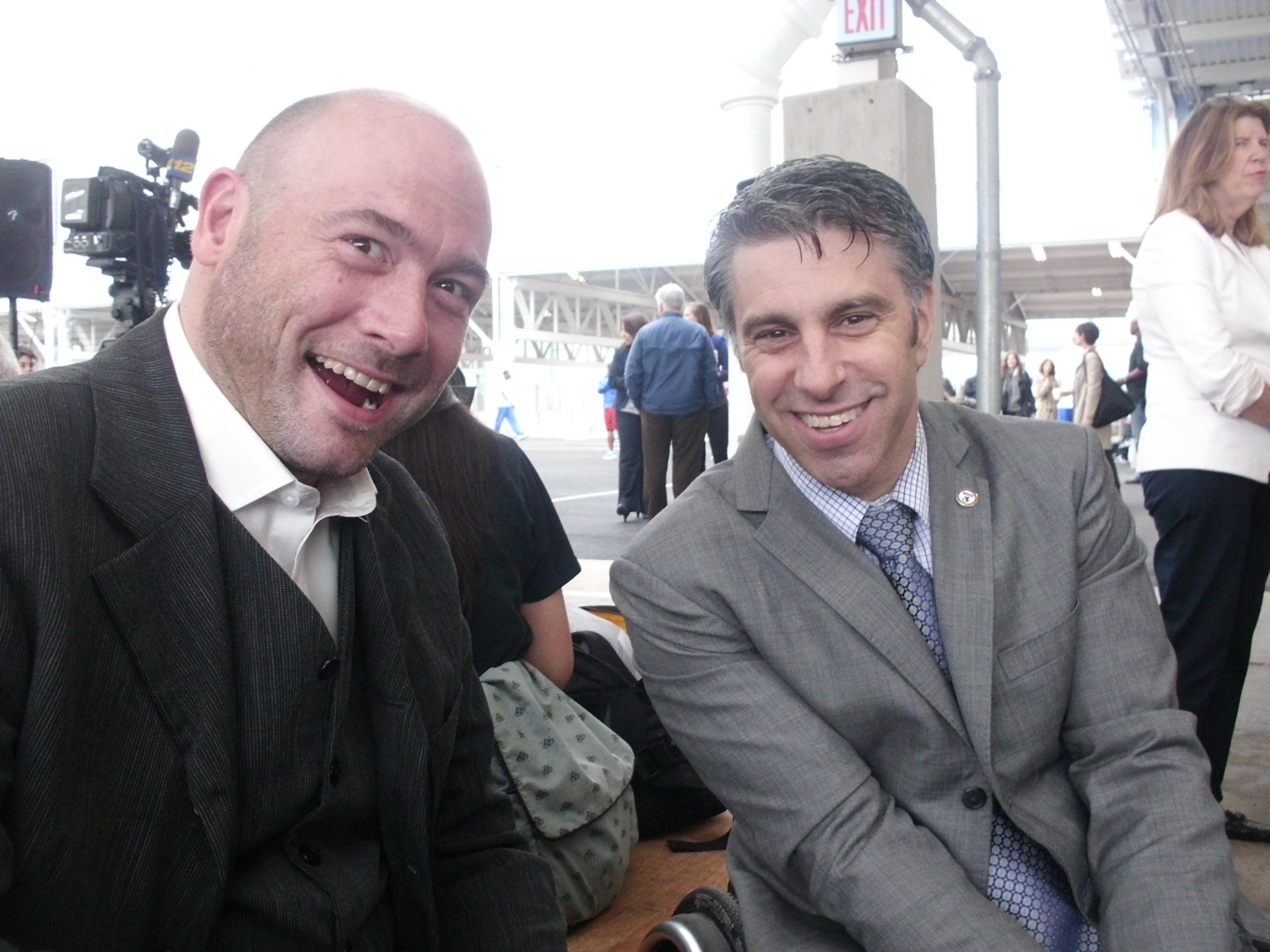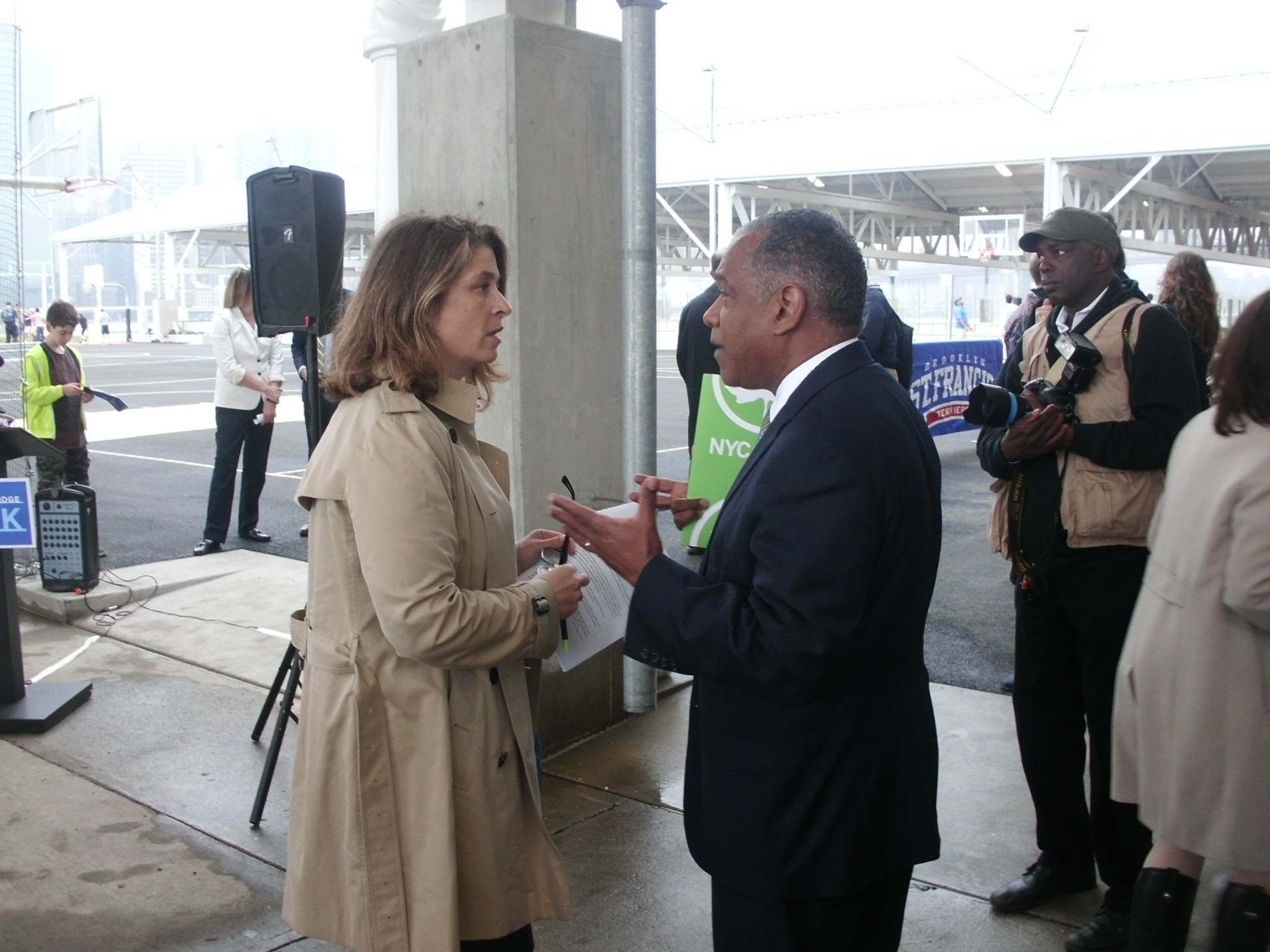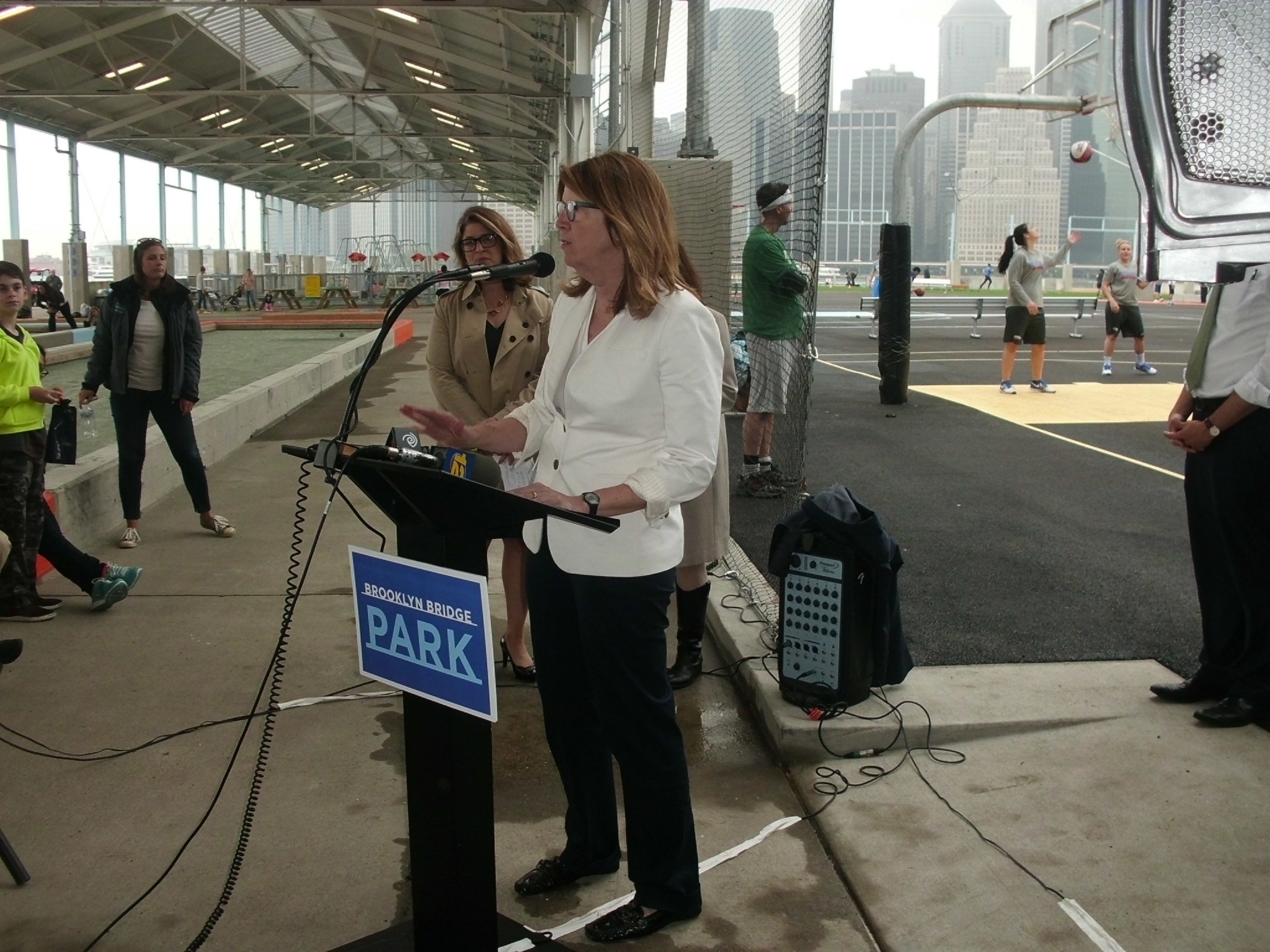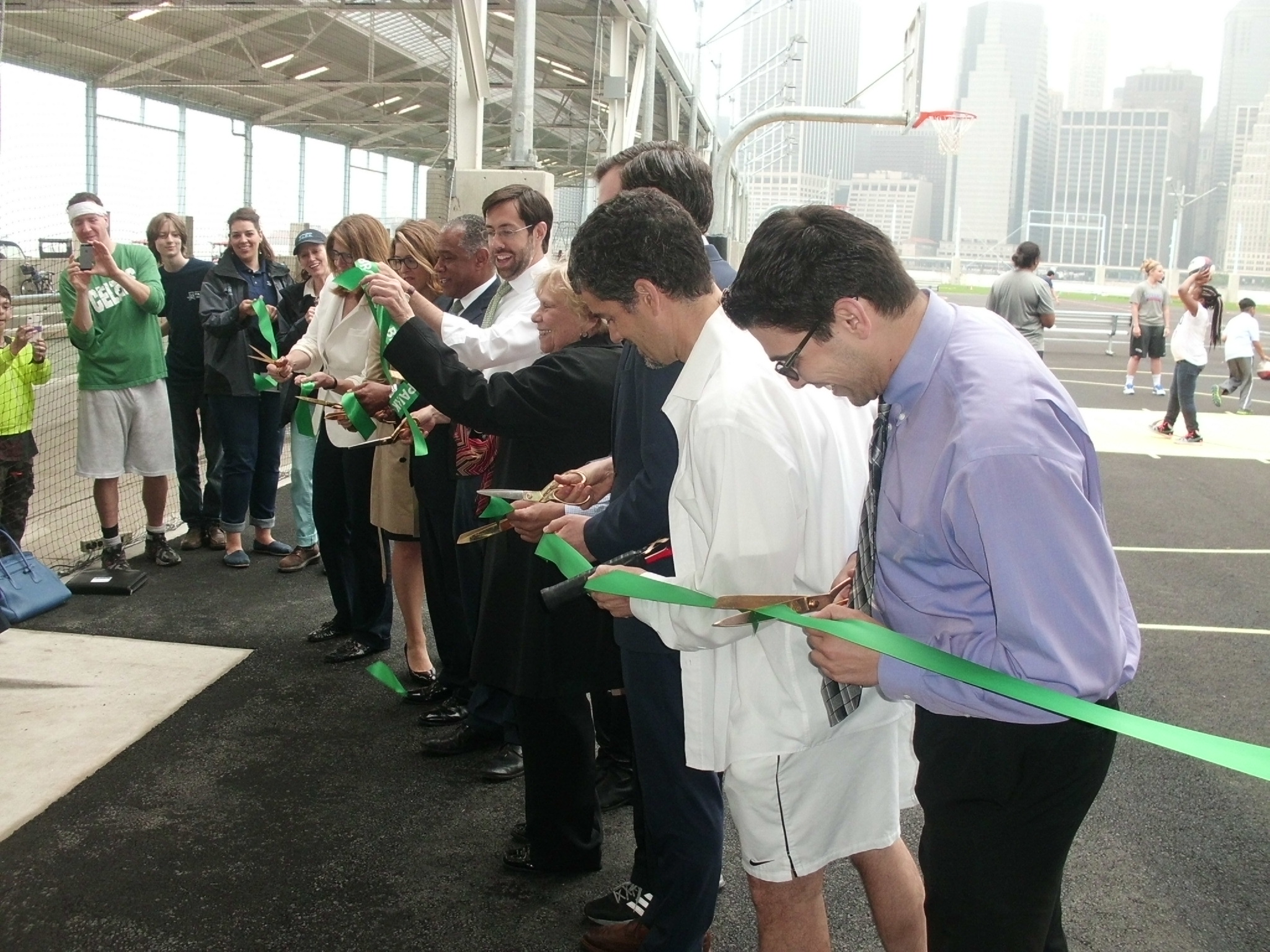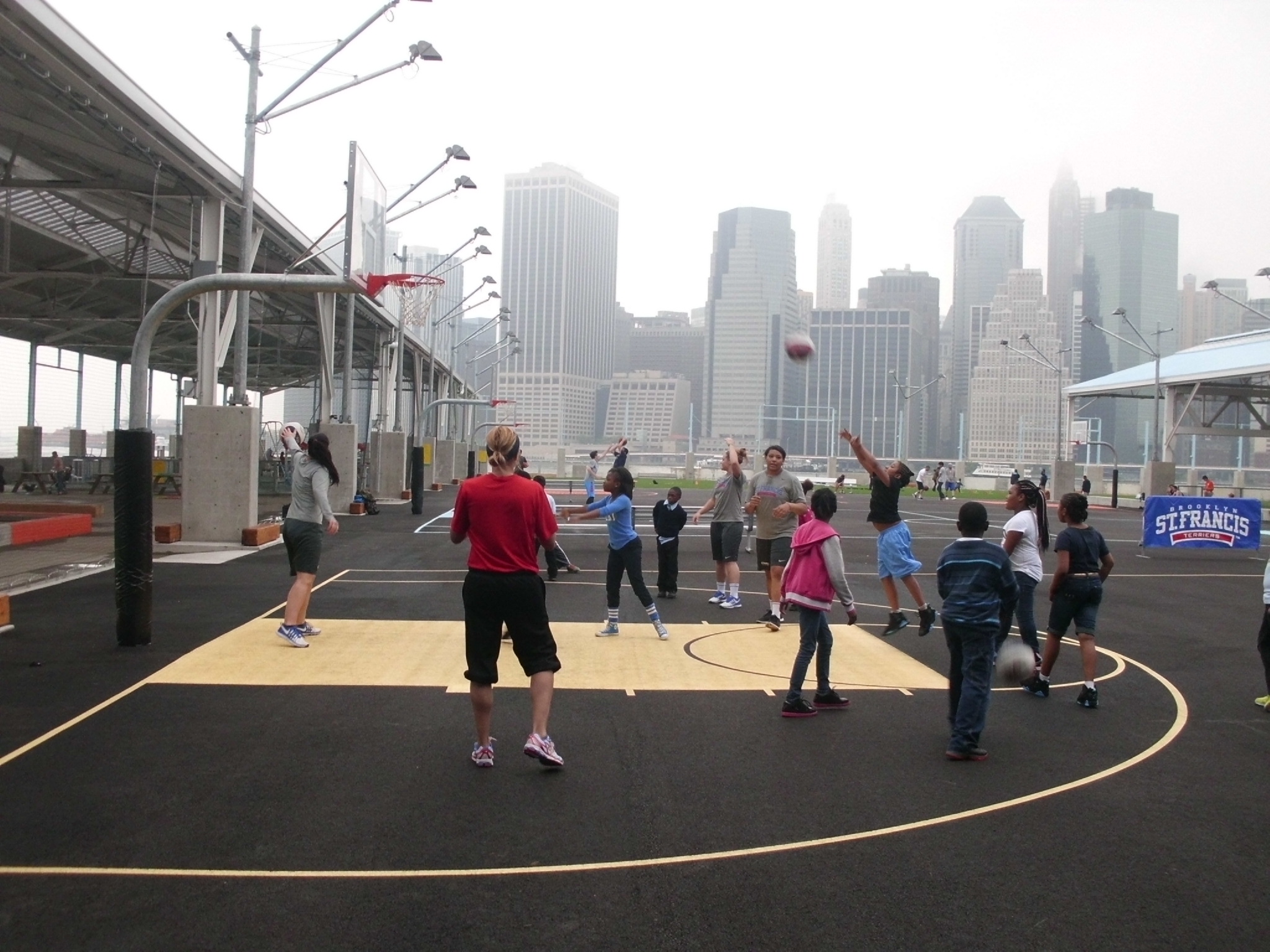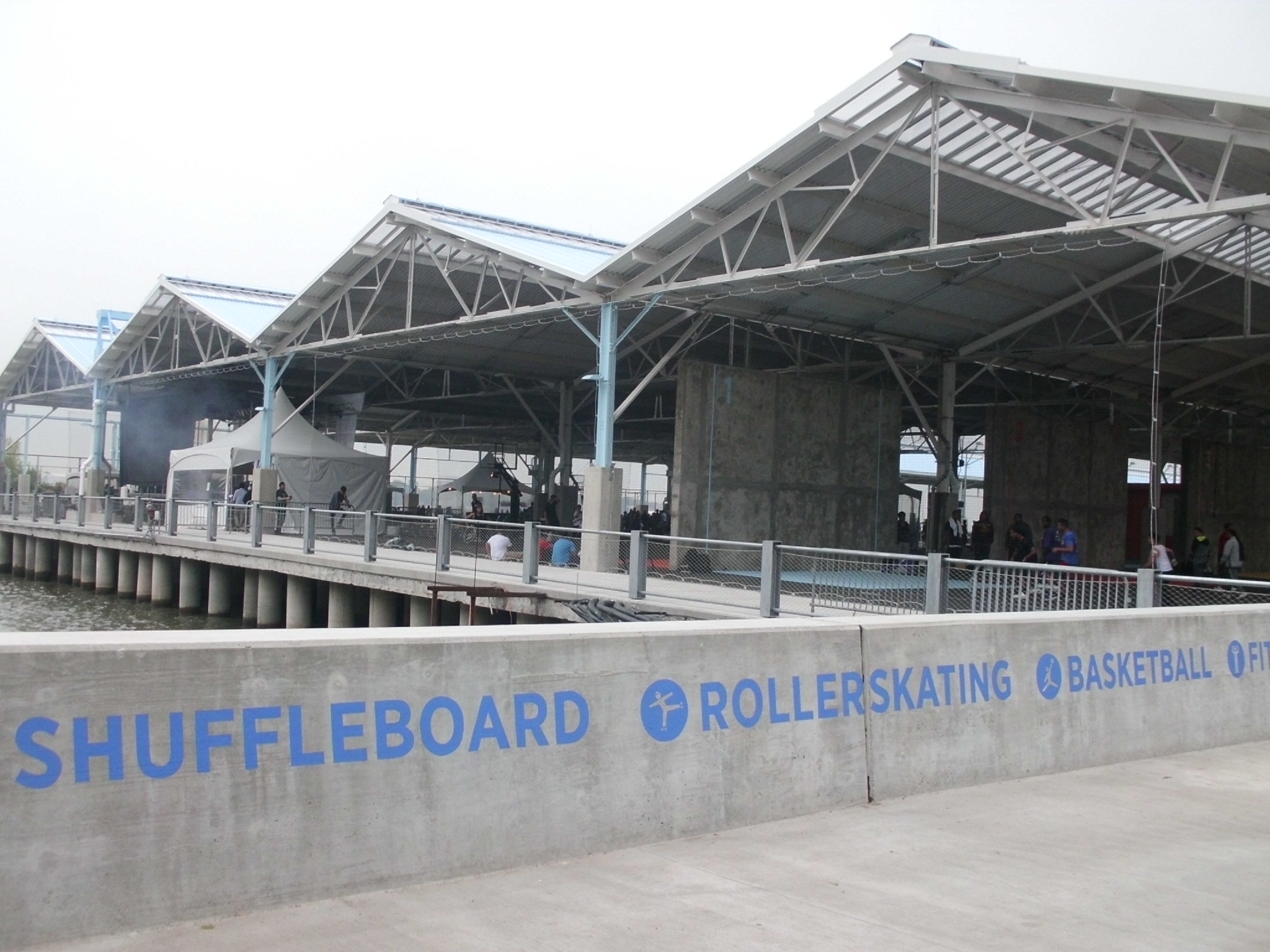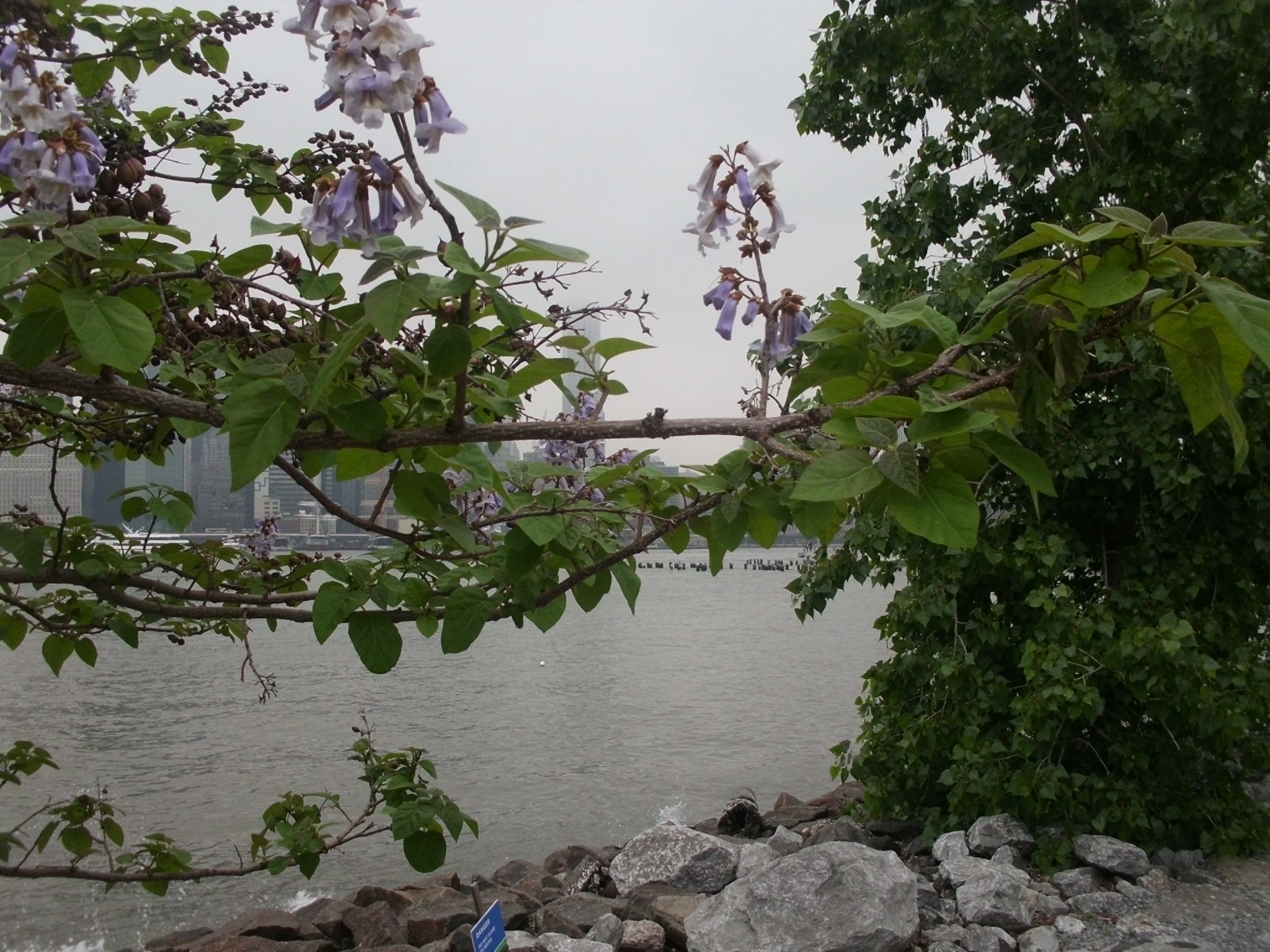by: Rick Bell FAIA Executive Director AIA New York
On a misty day last week, the city’s newest active recreational facility, Pier 2 at Brooklyn Bridge Park, opened with a flourish of eloquence, and a day of basketball and handball. On hand were Alicia Glen, the Deputy Mayor for Housing and Economic Development and Chair of Brooklyn Bridge Park (BBP), along with newly-appointed Parks Commissioner Mitchell J. Silver, FAICP, and BBP President Regina Myer. Also speaking at the opening were Brooklyn Bridge Park Conservancy Executive Director Nancy Webster and elected officials including State Senator Daniel Squadron, Assembly Member Joan Millman, and Council Members Stephen Levin and Robert J. Cornegy. Commissioner Victor Calise of the Mayor’s Office for People with Disabilities was also present, as were design notables from around the world, including Andreas Vaa Bermann, head of the Norwegian Design Center, Norsk Form.
The Deputy Mayor praised the design by landscape architect Michael Van Valkenburgh Associates and Regina Myer and Nancy Webster for making it happen. She said: “What an incredible moment to expand active recreation here in Brooklyn Bridge Park,” and that “since its opening in 2010, the park has fast become a major attraction and community amenity.” Parks Commissioner Silver noted that he moved back to Brooklyn for his new job, and will be a frequent user of the new pier. The Commissioner said: “Not since the creation of Marine Park in the 1930s has the city seen the creation of a park of this size and importance,” adding, “The park is truly open to all.”
At Pier 2 there are five full-sized basketball courts, including one with fully adjustable hoops. Part of the play space is covered by the pier’s original storage shed structure, which provides protection from both sun and rain. Apart from the basketball courts, park visitors can play handball, shuffleboard, and bocce. Concurrent with the pier opening, a small adjacent sand beach also opened to the public.
The pier was originally built for shipping in the 1950s, and is over 650 feet long. The park itself will contain some 85 acres of active and passive play space running some 1.3 miles along Brooklyn’s East River shoreline.









